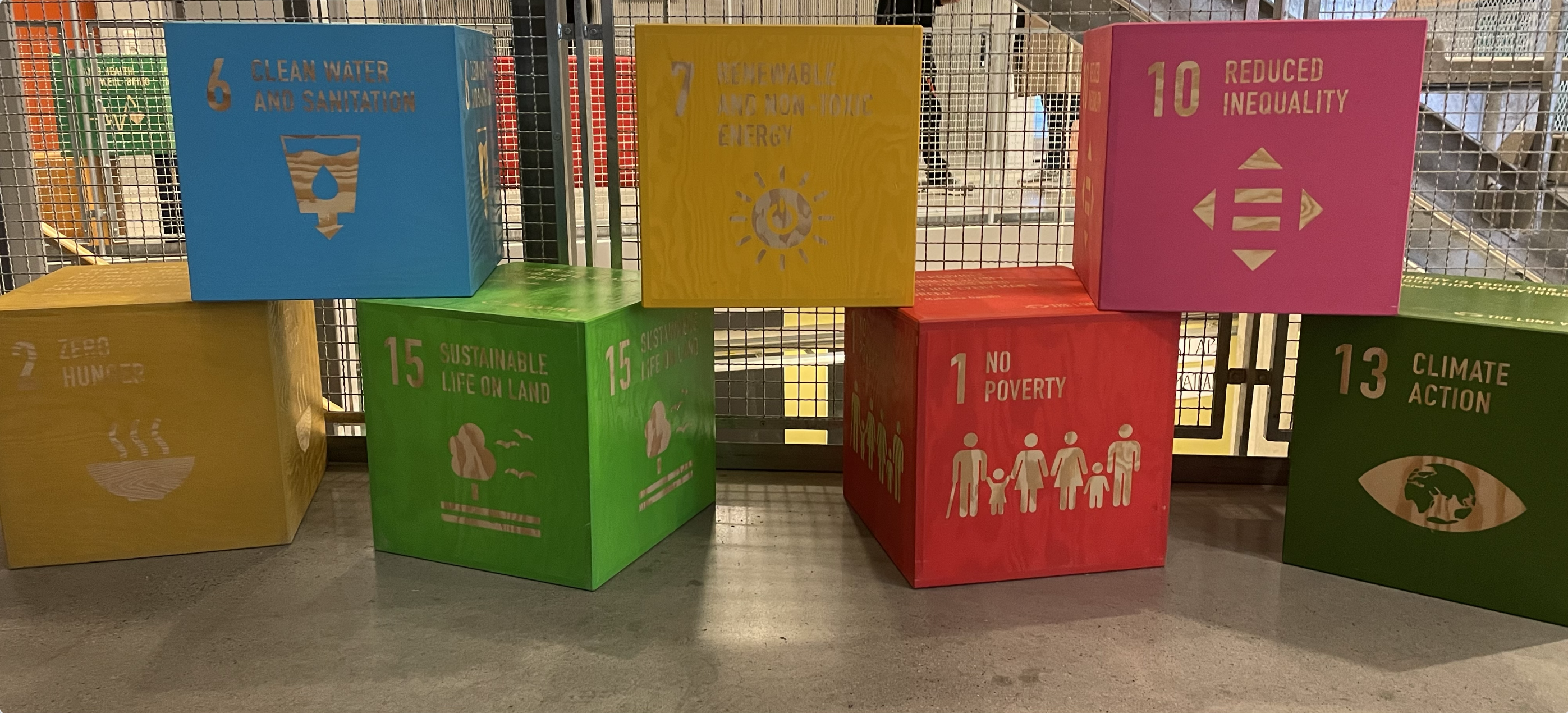
Wamsler et al. (2021)’s literature review on “Linking internal and external transformation for sustainability and climate action”, and “Inner Development Goals”
Especially when it comes to teaching about climate change or sustainability more generally, it seems unavoidable to really consider mental states. While the dominant discourse around climate change has been about external, biophysical factors for a long time, and climate change was thus seen as a challenge that can be solved by technology and policy changes and does not require any other real changes from us, this view is currently changing towards one that considers internal “mental states”. The climate crisis is then a human relationship problem that cannot be separated from other crises like hunger, poverty, or the covid-19 pandemic, and that is inadvertently caused by internal issues like racism, injustice, consumerism. So fixing the climate crisis requires changes in the way we all think about the world and live our lives: We need to reconsider our values, beliefs and worldviews in order to change the way we act.
Wamsler et al. (2021) review the literature to develop an integrated model of change that explains the interaction of internal and external changes for sustainability.
In their model, they describe input conditions (interventions and enabling environments) that — through a continuum of individual, collective and systems level change — lead to sustainability outcomes at all levels.
Input conditions that are helpful in supporting sustainability outcomes are complex and often at play over long time spans, often starting in childhood within families. But on shorter term, they can also be founded in e.g. mindfulness-based interventions, and more generally in safe spaces for reflection, learning and co-creation, in which trust can be built. The interventions and enabling environments can then be separated into two approaches:
- “nurturing and enabling transformative qualities” (that influence how people learn and take decisions, and that can thus possibly support changes towards more sustainable behavior, see more below)
- “systematic consideration of internal dimensions in the political and institutional landscape to create conditions that support the emergence of more sustainable narratives and solutions”
The outcomes, on the other hand, are on an individual level “pro-social and pro-environmental behaviors and orientations”, but at the same time at a systems level “inner dimensions integrated across all institutional and policy levels”. This leads to “regeneration of human and planetary wellbeing” and a “society of care”
So how does this happen? In the model, changes happen on a continuum of individual, collective and system level change. In each individual, “transformative qualities” that influence how people learn and take decisions, and that can thus possibly support changes, need to be fostered towards more sustainable behavior. Five clusters of such qualities are identified in the model, falling around awareness, connection, insight, purpose, agency.
Interaction with intermediary factors are outcomes of transformative capacities that influence outer changes: subjective wellbeing and health (climate anxiety and stress are the opposite of this), self-efficacy, identification and reduction of cognitive dissonance, social identity and trust.
Both the increased transformative qualities and the intermediary factors then interact with changes in relationships and connection that are based in changed beliefs and worldviews and lead to an increase in an individual’s circle of identity, care and responsibility. This then leads to changes in the three dimensions of agency at individual and collective level: being, thinking, and acting.
At the same time, there are (or need to be) changes happening outside of individuals, for example in knowledge systems and power structures.
Ultimately, we need to have changed our inner states from the ones that led us to where we are now (i.e. the greed, egocentricity, etc) to connectedness with, and focus on, others outside of ourselves, values that focus on the well-being of the whole system, and a sense of agency and related perceptions of identity, care, influence and responsibility.
What do we need to do to get there? According to Wamsler et al. (2021), there are several pathways. We can work on developing environments and practices that support the transformative qualities identified above, which will help us discover internalized cultural patterns and increase a sense of interconnection. And we can mainstream talking about the internal dimension, and include this into the political and institutional landscape. This means changing organization’ strategic aims, working structures, resource allocation, etc in order to create structures that support sustainable narratives and solutions, and “nurture culture of care and inner growth”.
Another idea that goes in the same direction, that I find intriguing and that helps illustrate what exactly we need to work with are the “Inner Development Goals“, a framework similar to the UN Sustainable Development Goals, except showing the developments that we have to strive for as individuals and collectively, in order to be able to deal with challenges like the climate crisis: our relationship to ourselves, our cognitive skills, caring for others and the world, social skills, and driving change (and of course, each of those is an umbrella of several sub goals that are elaborated on in that framework). Even though this does not give us any instructions for how to reach those goals, at least it provides a direction for orientation.
Combined, these two resources feel encouraging in my thinking about how to teach teachers to teach about sustainability. “Mainstreaming” talking about the inner dimension is something that I can easily — at least to some extent — do in my role as academic developer, as is trying to create environments and practices that support the development of the “transformative qualities”. And I can use the Inner Development Goals to provide a framework for the kind of things we need to talk about and work on. Stay tuned to see where this develops in my head — I am on it!
Wamsler, C., Osberg, G., Osika, W., Herndersson, H., & Mundaca, L. (2021). Linking internal and external transformation for sustainability and climate action: Towards a new research and policy agenda. Global Environmental Change, 71, 102373.